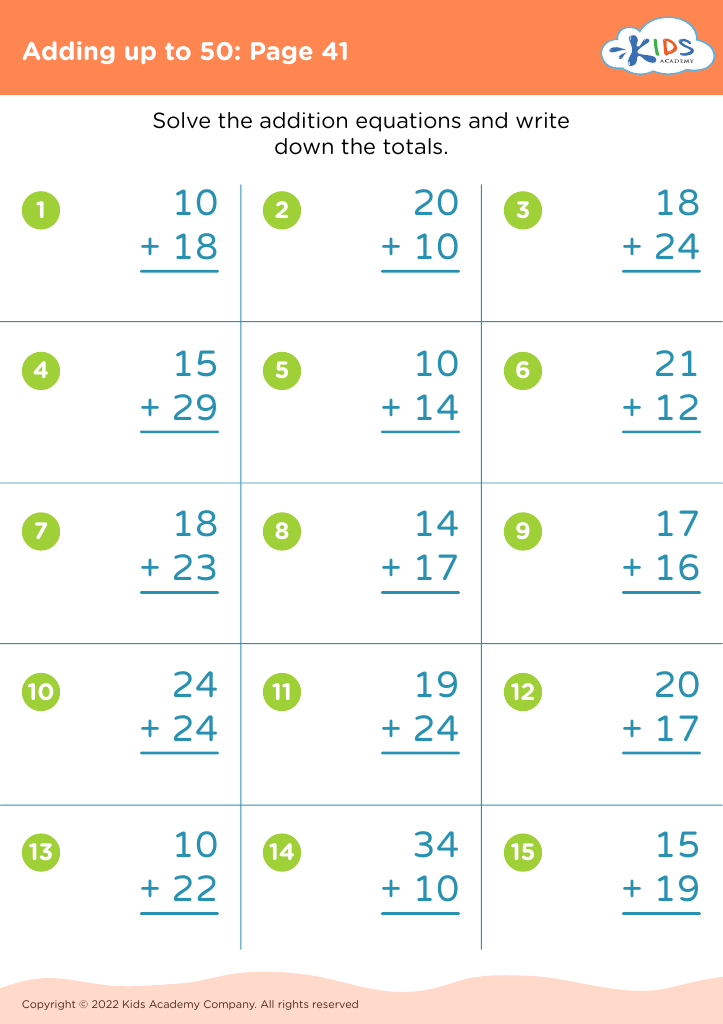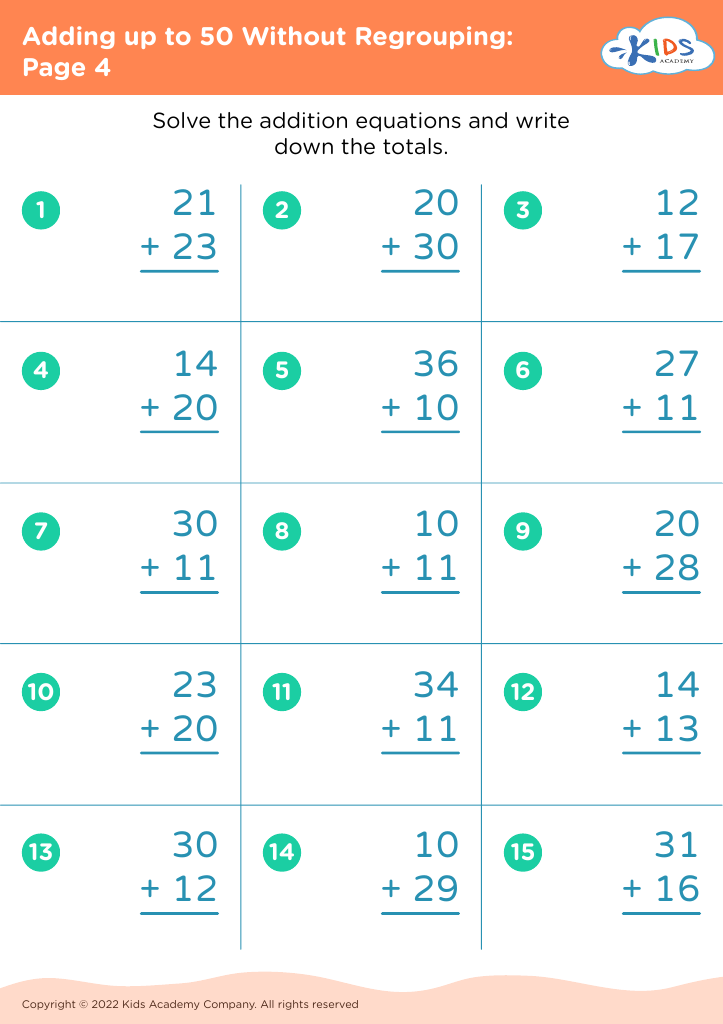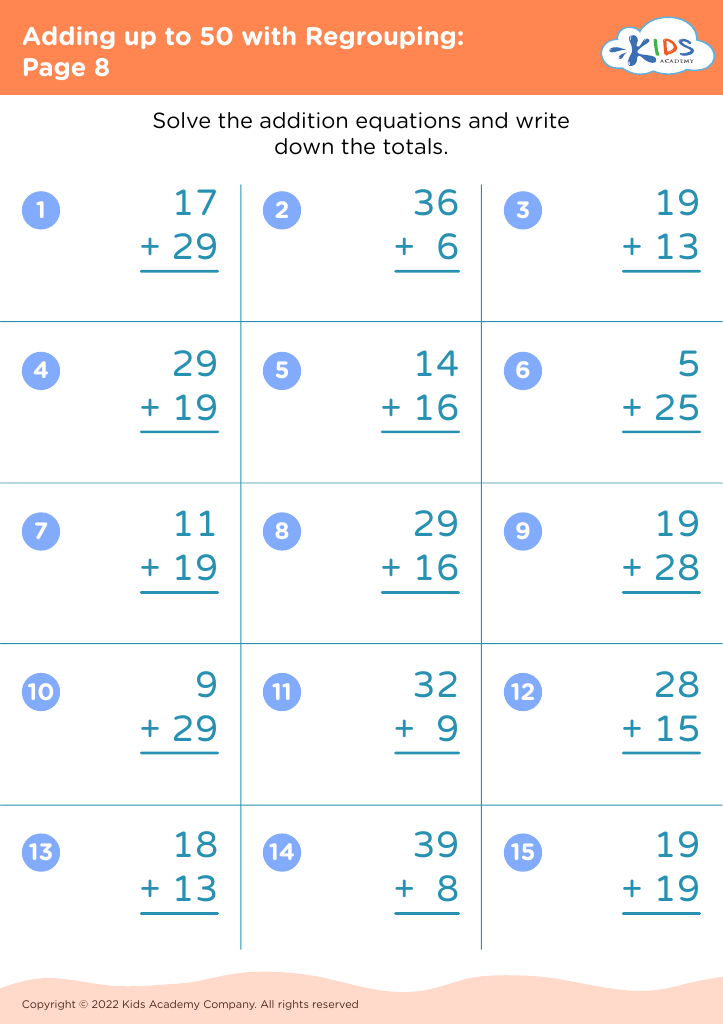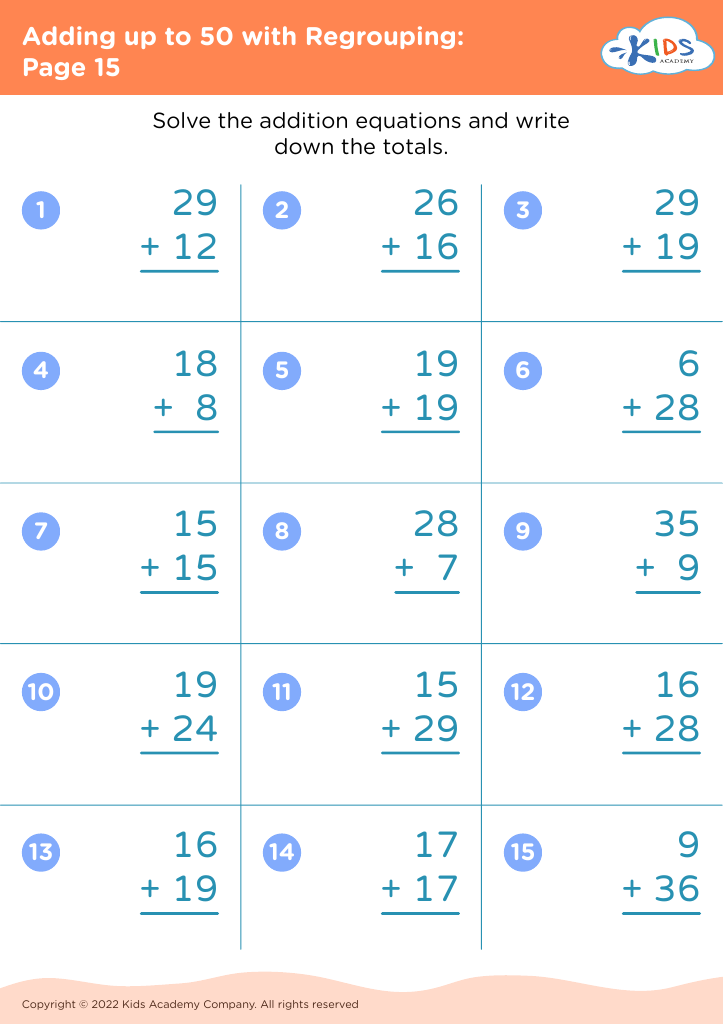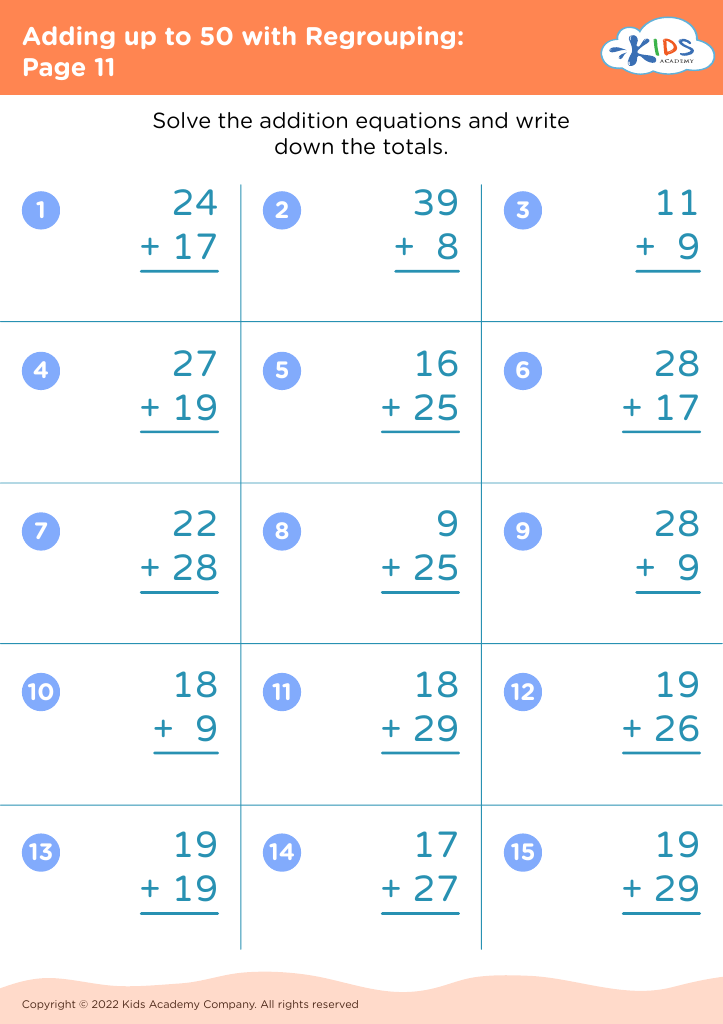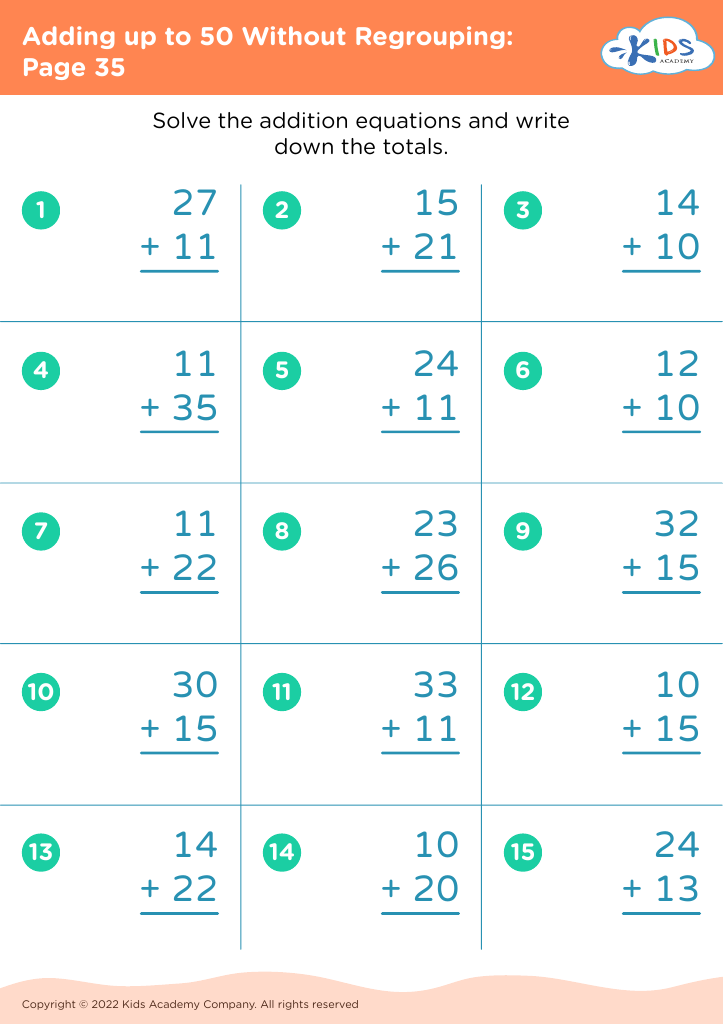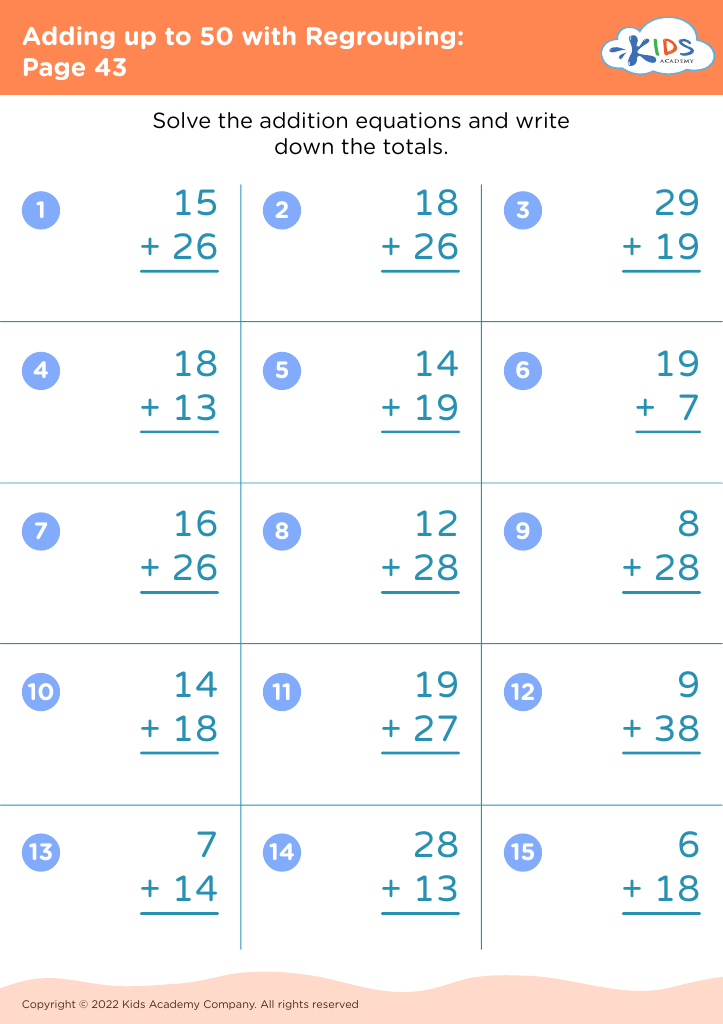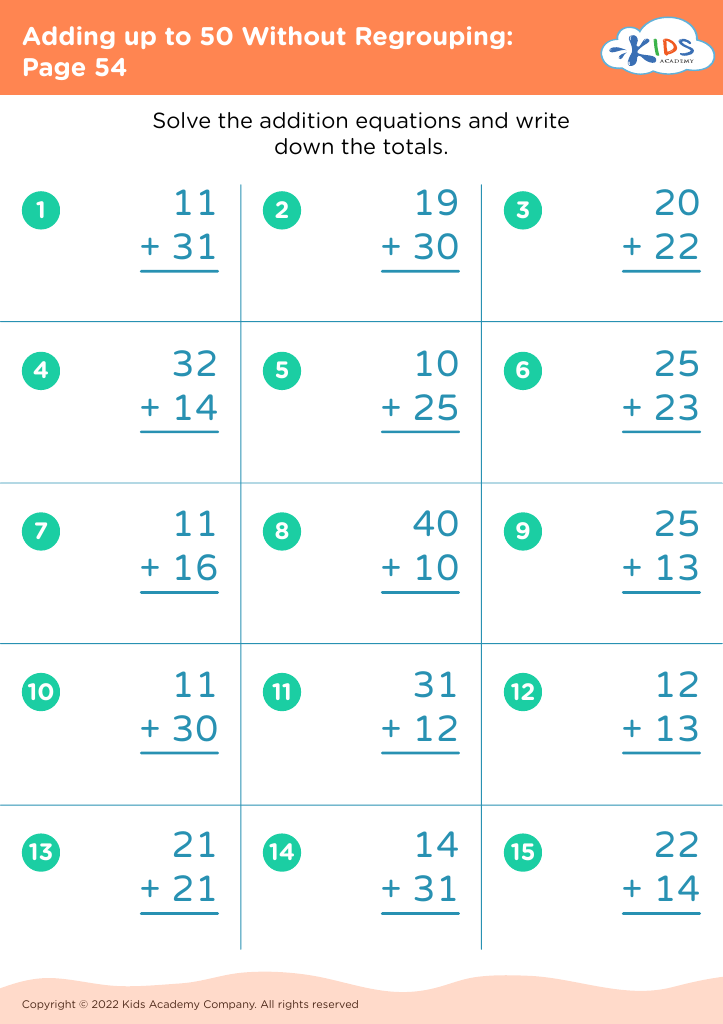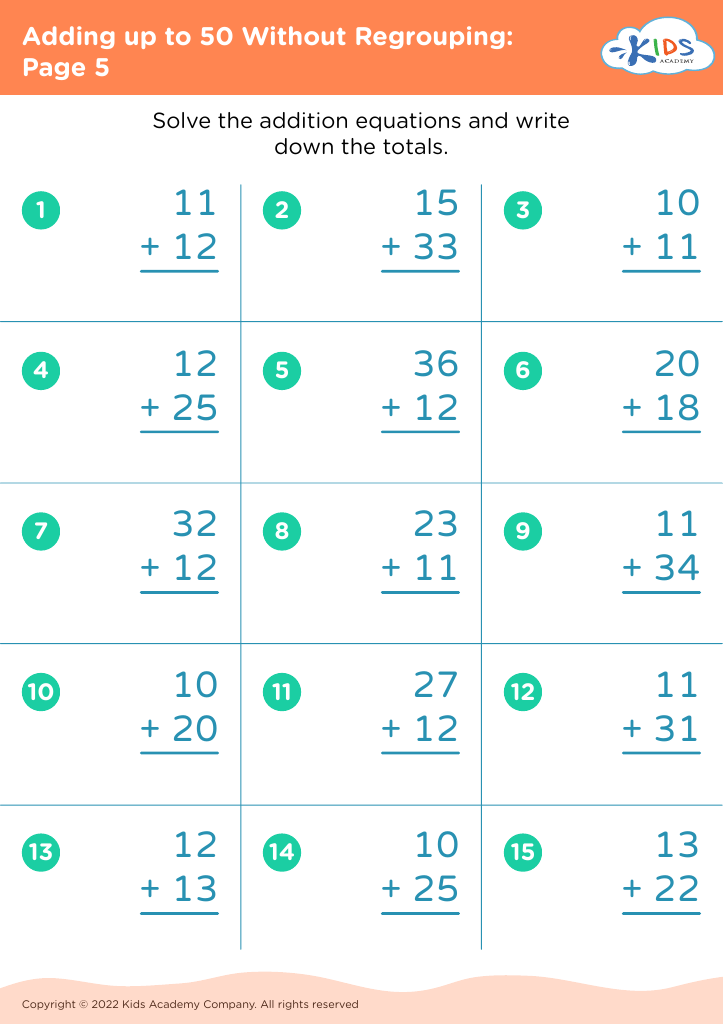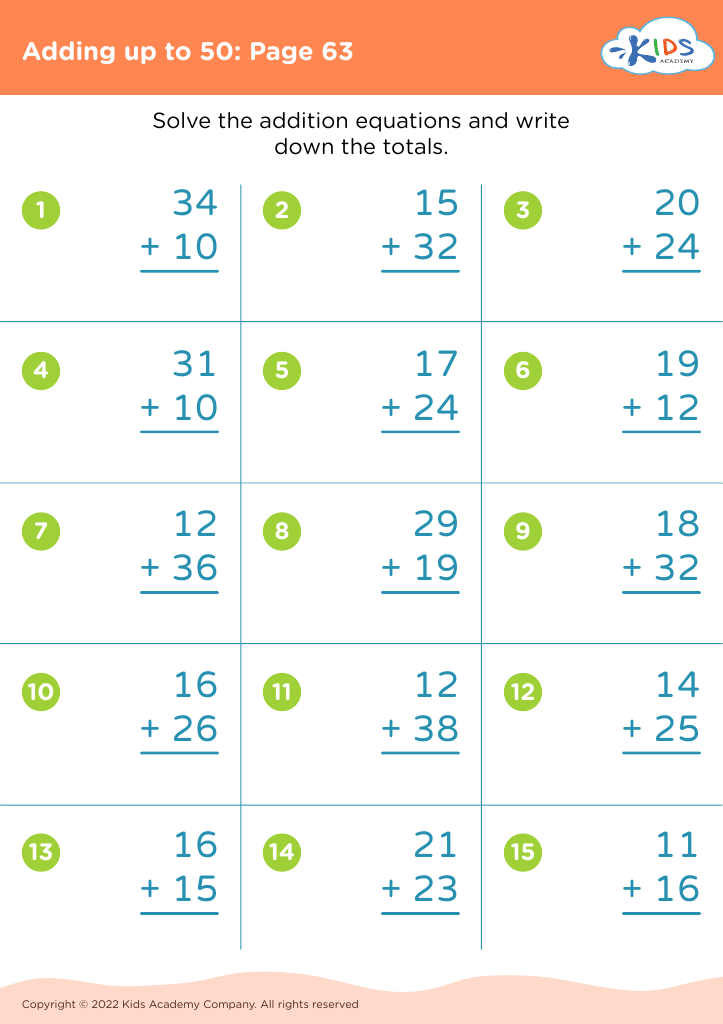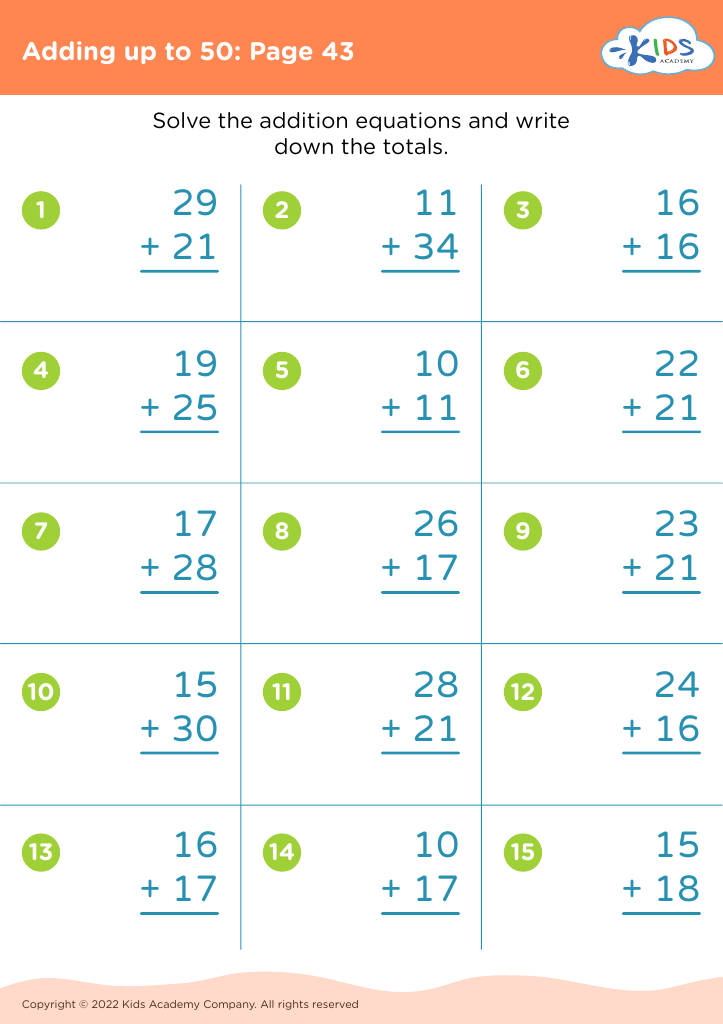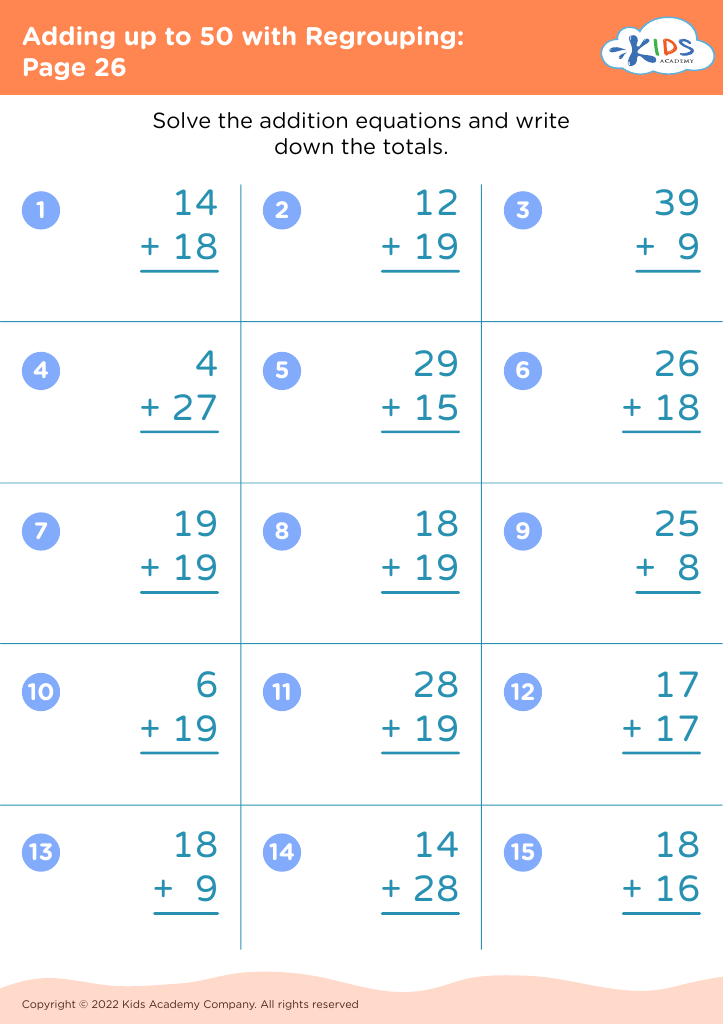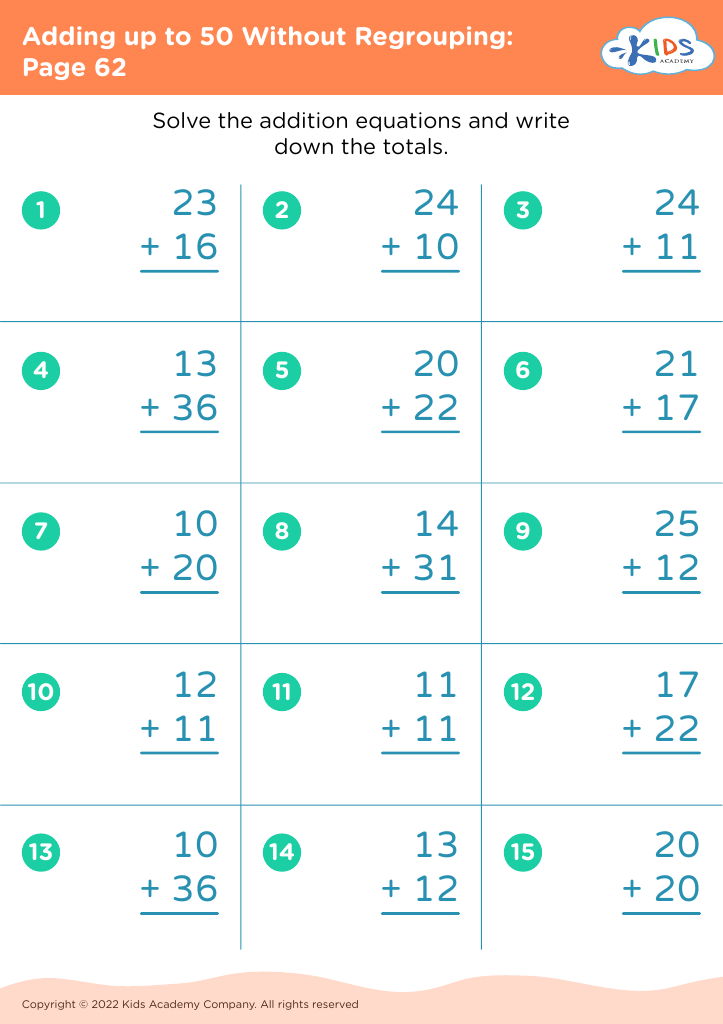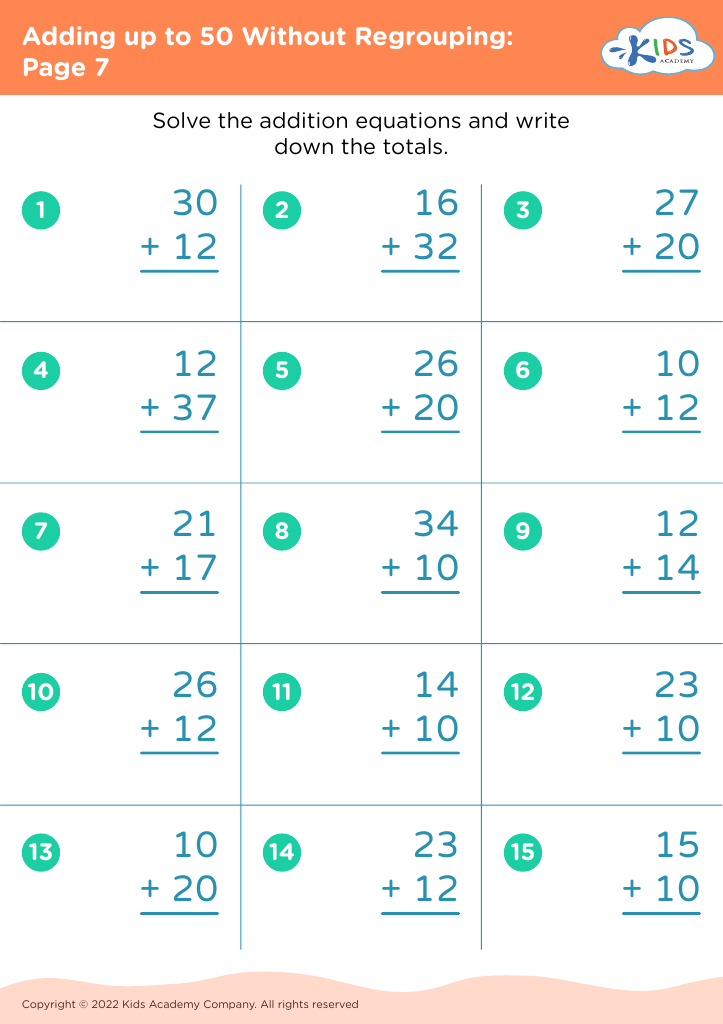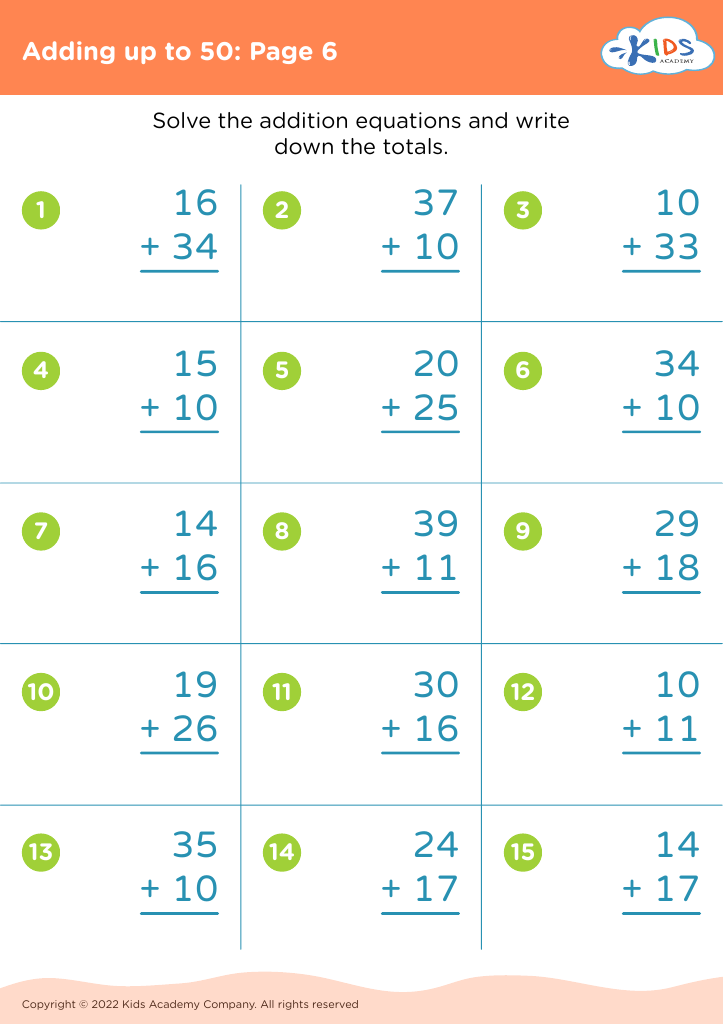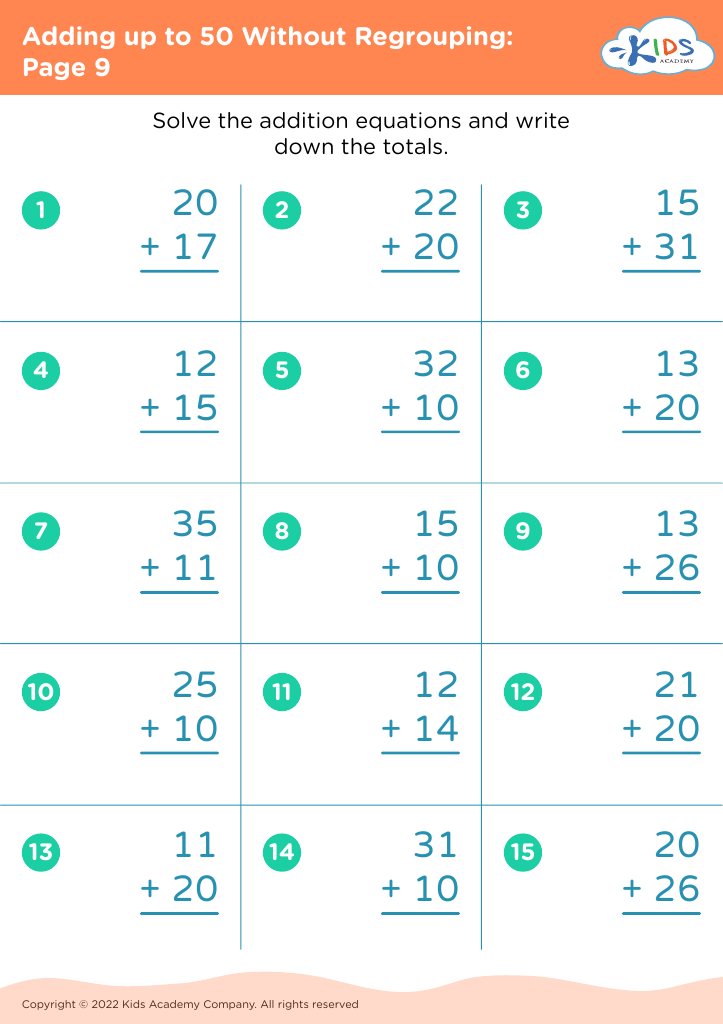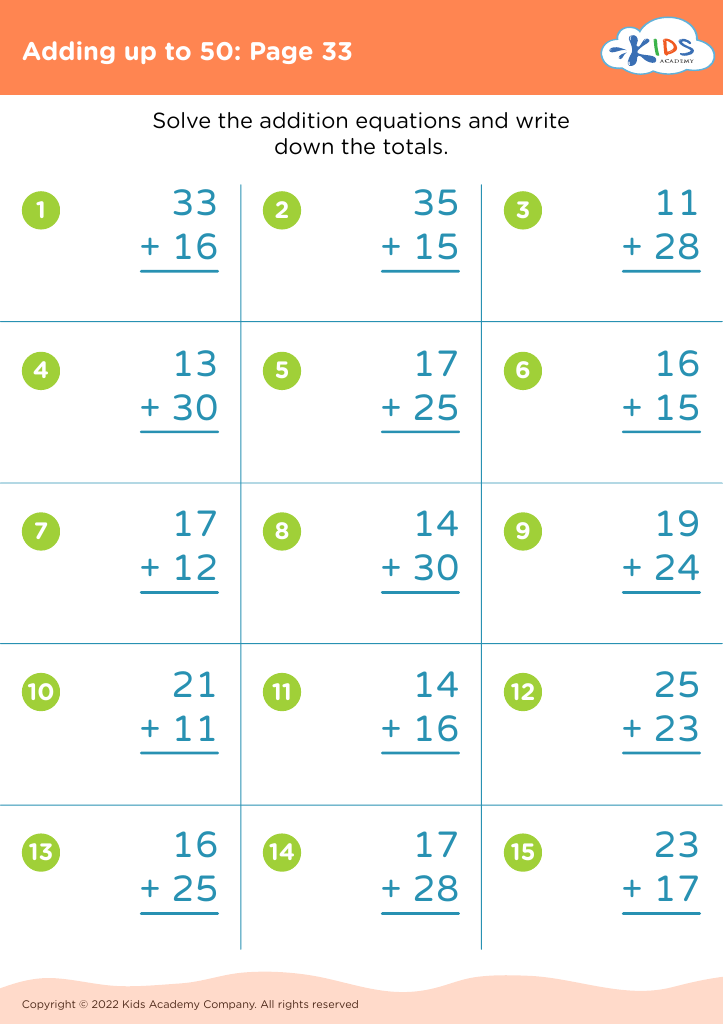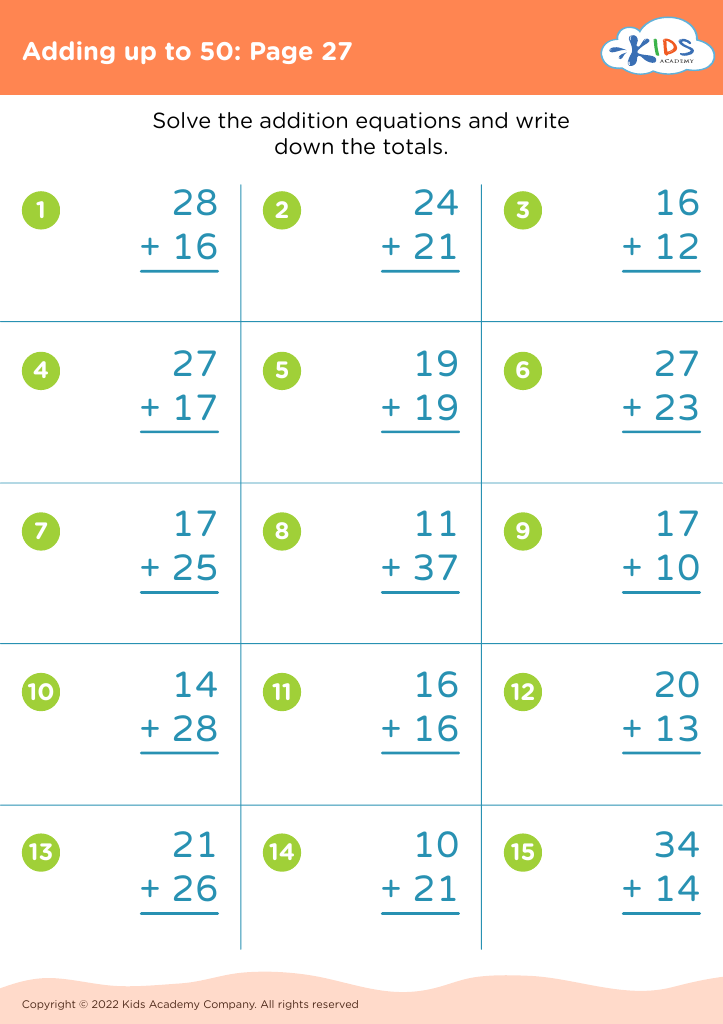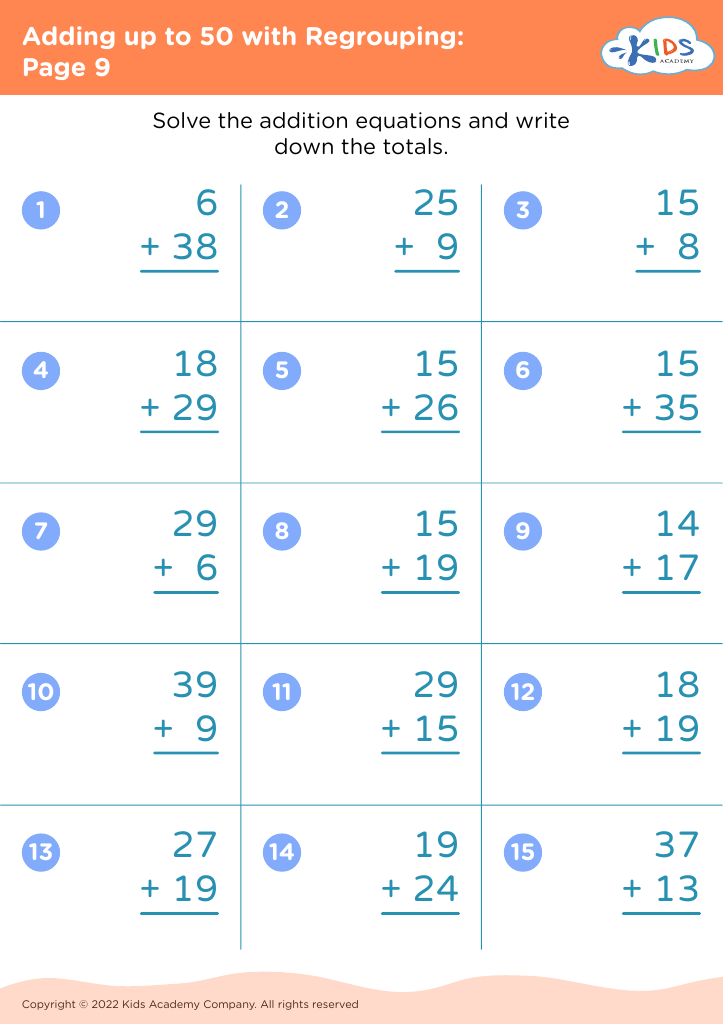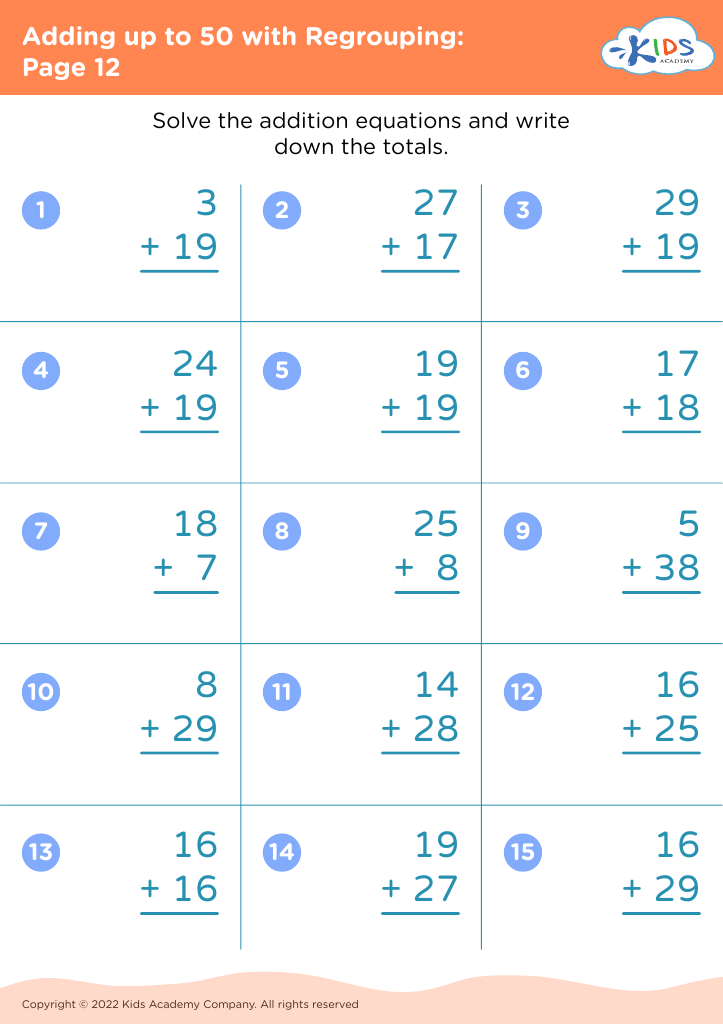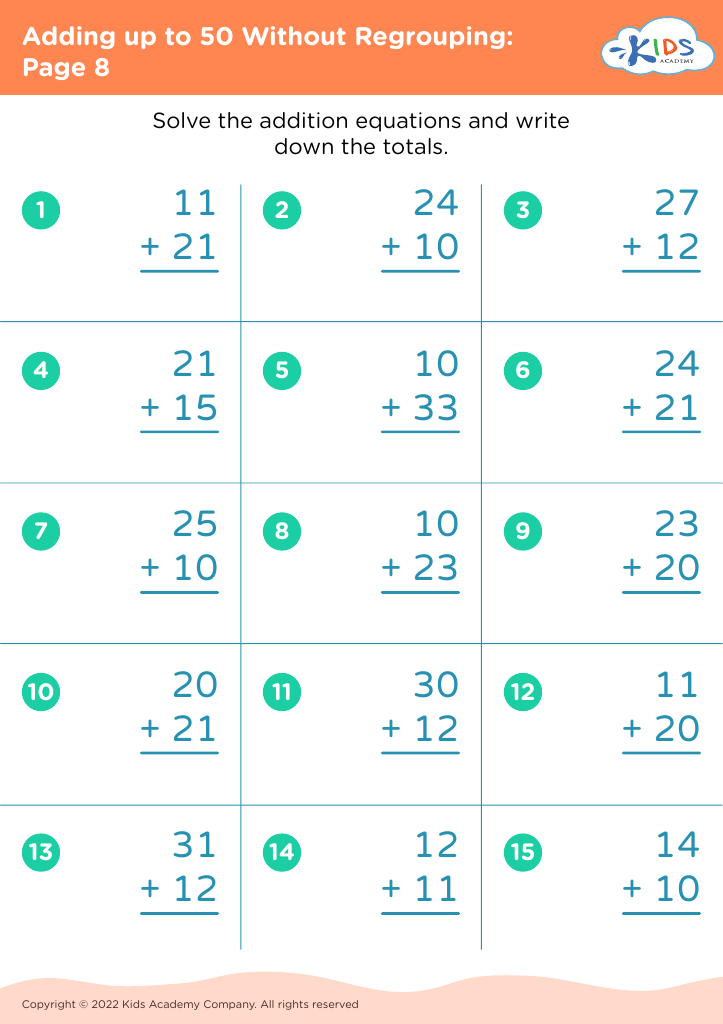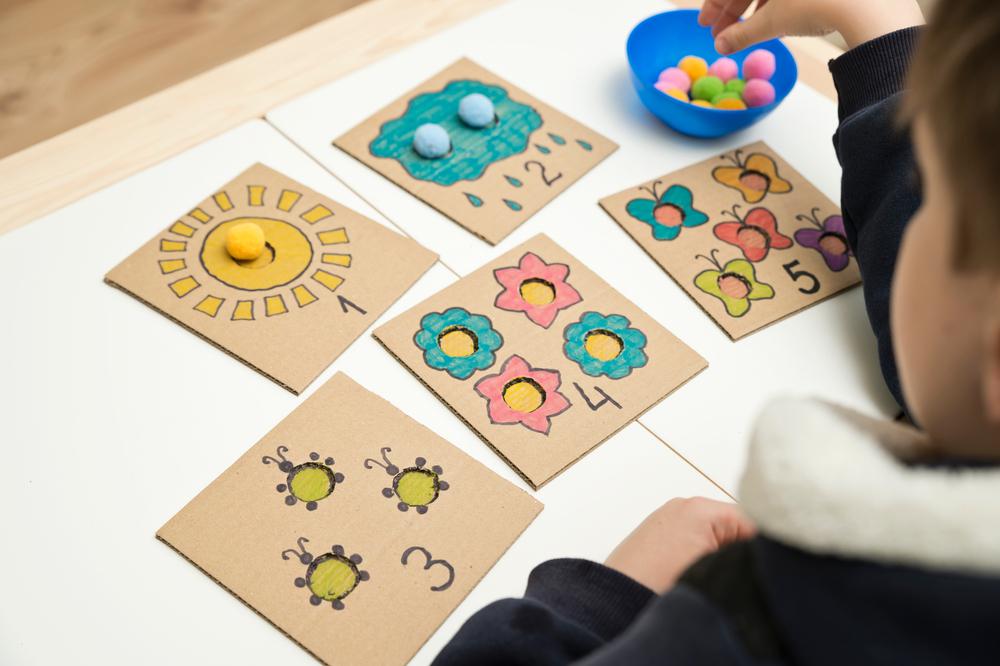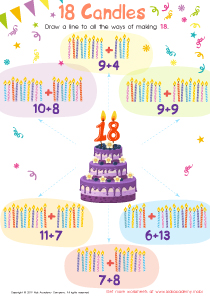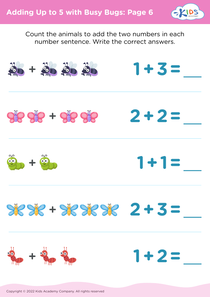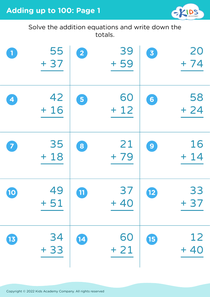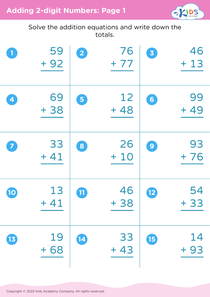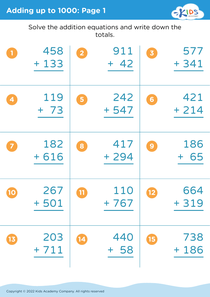Number Recognition Adding up to 50 Worksheets for Ages 3-7
43 filtered results
-
From - To
Discover our engaging "Number Recognition Adding up to 50 Worksheets" perfect for ages 3-7. Designed to support early math learners, these printables foster key skills like number identification, counting, and basic addition, all within a fun and interactive format. From simple counting exercises to adding larger numbers, these worksheets provide a solid foundation for math success. Whether at home or in the classroom, our resources make learning enjoyable and effective, ensuring young minds build confidence as they master essential numerical concepts. Ready to inspire your little ones' mathematical journey? Join us today at Kids Academy!
Number recognition and the ability to add numbers up to 50 are crucial developmental milestones for children aged 3-7. These skills form the foundation of numeracy, which is essential for later success in more complex mathematical concepts. When children recognize and understand numbers, they develop cognitive skills such as memory and problem-solving. This early numeracy cultivates a positive attitude towards math, helping to diminish math anxiety in later stages of education.
Understanding numbers up to 50 helps children grasp the basics of the decimal system, setting the stage for learning operations involving larger numbers. It encourages logical thinking by familiarizing them with patterns and sequences. For instance, recognizing that 10 follows 9 and that 50 follows 49 is fundamental for future arithmetic operations.
Furthermore, integrating these numerical skills into daily activities can make learning more concrete and relatable; for example, counting objects, simple board games, or even small purchases. By involving parents and teachers in fostering these skills, children receive the support needed to feel confident in their abilities. This nurtures a love for learning and builds the practical skills they'll use throughout their life, not just in mathematical contexts but in understanding and interacting with the world.

